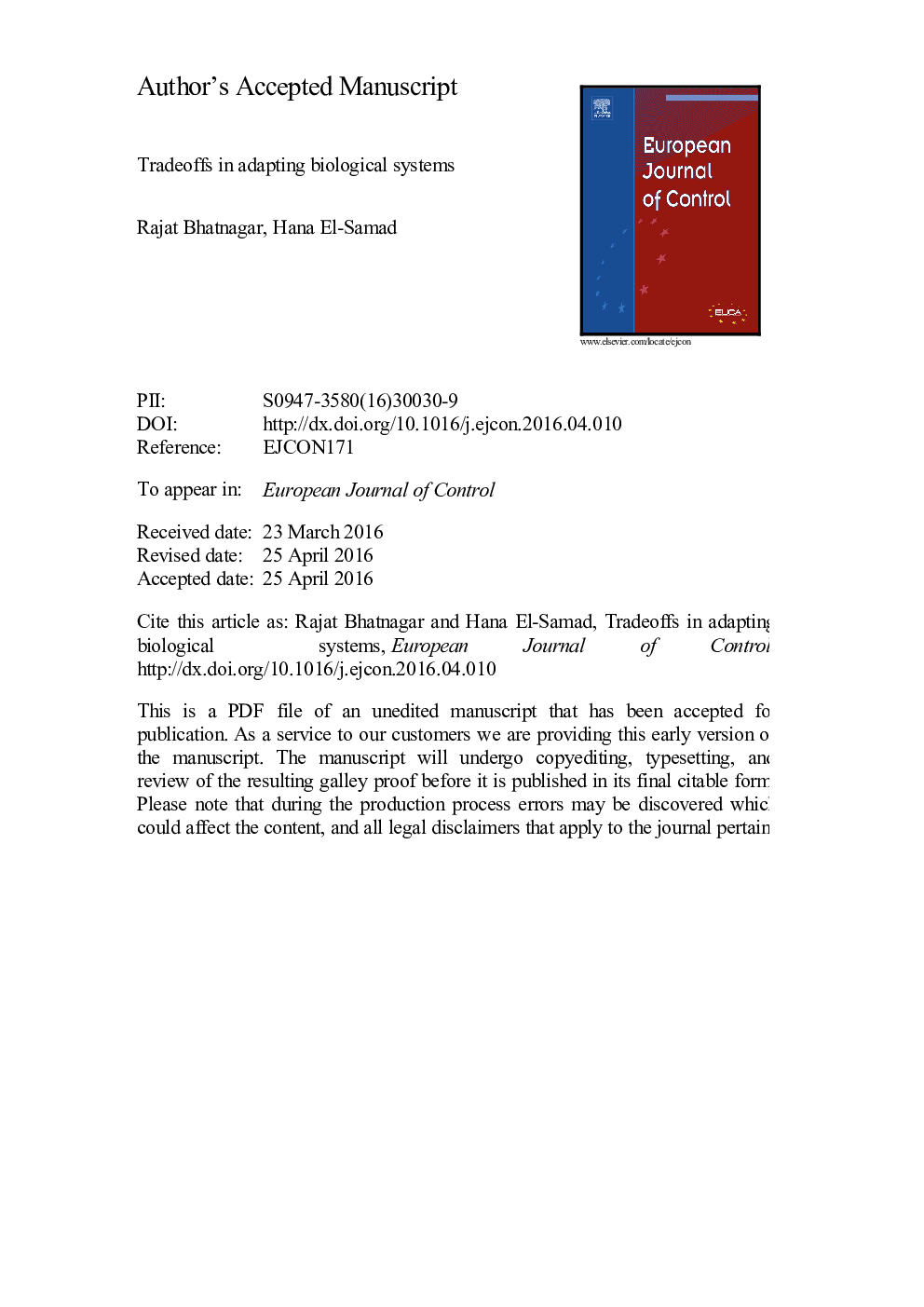| Article ID | Journal | Published Year | Pages | File Type |
|---|---|---|---|---|
| 7113806 | European Journal of Control | 2016 | 17 Pages |
Abstract
Biological systems must sense and adapt to changes in their environment. Molecular networks capable of such adaptation belong to two well-known classes, feedforward and feedback structures, but the fundamental limitations and tradeoffs of these two classes remain unknown. Here we study the advantages and limitations of the feedforward class using three-node circuits representative of these architectures. The feedforward model we investigate displays a tradeoff between the sensitivity of the response (its peak response) and its precision (its error in its return to steady-state). We suggest two ways in which this tradeoff can be alleviated: (1) by introducing a nonlinearity in the production of a specific node in the network, and (2) by adding a feedback loop to the input. We present analytical and numerical examples to support our findings.
Keywords
Related Topics
Physical Sciences and Engineering
Engineering
Control and Systems Engineering
Authors
Rajat Bhatnagar, Hana El-Samad,
